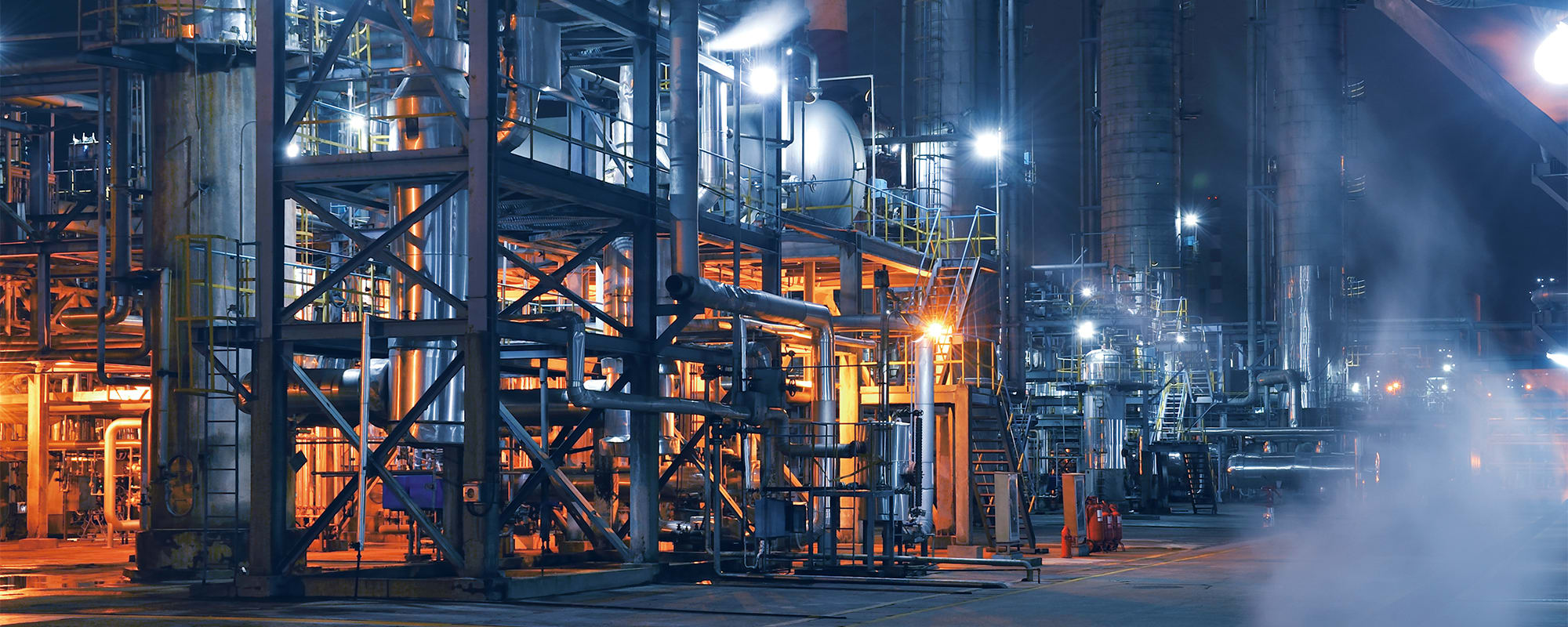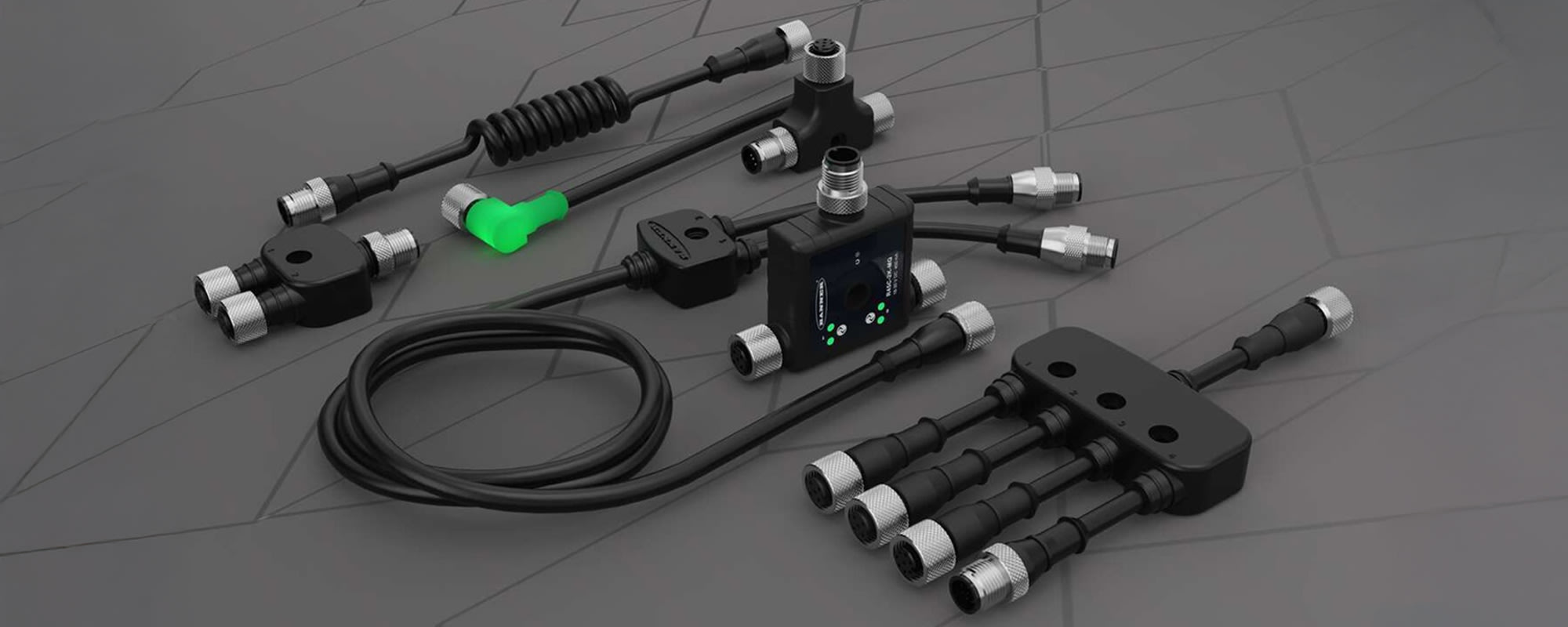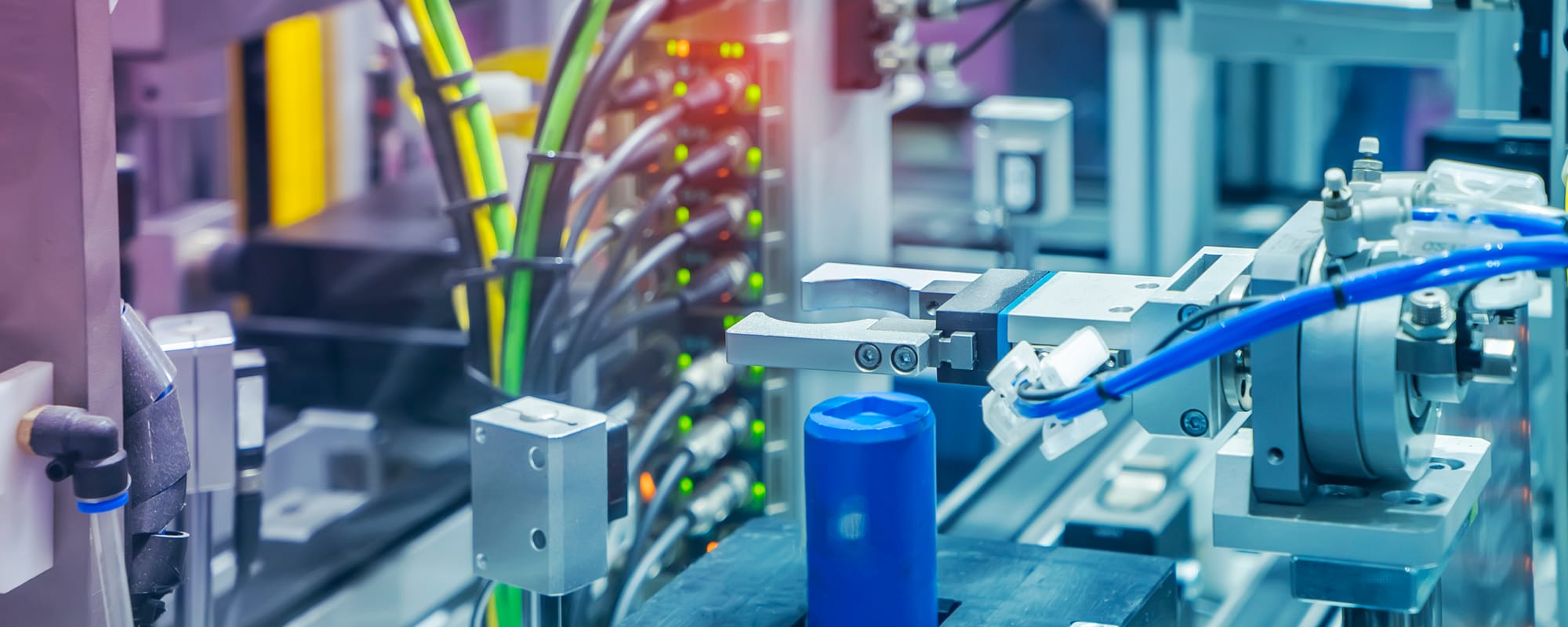Jean-Marc Hubsch, Engineering Manager for Encoders and Position Sensors at Sensata – BEI Sensors, deep dives into incremental encoders and the many hazardous environments they’re deployed in. Jean-Marc shares critical considerations for ensuring peak performance and adaptability in diverse industrial applications and introduces rugged Sensata solutions engineered to ensure unparalleled precision and durability in even extremely volatile and demanding environments.

Choosing the right motion control solutions can be a challenging endeavor for end users in harsh industrial environments. Robust, high-performance encoders designed to withstand hazards common to a variety of harsh application environments — ranging from industrial manufacturing to mining and oil and gas — can help.
We spoke with Jean-Marc Hubsch, the Engineering Manager for Encoders and Position Sensors at Sensata – BEI Sensors, to learn more about industrial encoders designed to thrive in the most unforgiving application environments. Jean-Marc leveraged his deep knowledge of encoders and angle sensors and his 35 years of industry experience to share expert insights into the key characteristics, buying considerations, and relevant certifications that engineers should become familiar with to make better-informed decisions about the best encoders for their hazardous environment applications.
Hi Jean-Marc. You joined us today to talk about incremental encoders for harsh environment applications. So, let’s dive in. What should people know?
Encoders are a vital part of delivering the safe and reliable signaling and power used to determine equipment speed and position control, both of which are critical elements of automation. These electrical and mechanical devices ensure effective feedback in the control loop between motors, drives, and PLCs and, as such, must provide precise, uninterrupted signals in any industrial environment.
Hazardous environments occur in industrial settings when three fundamental elements are present: flammable substances, like hydrogen, gasoline, or kerosene; an oxidizer, such as dust or fibers; and an ignition source, like a flame or spark, or even extreme heat. These environments introduce profound equipment stresses. So, encoders operating in these conditions must be exceptionally robust.
Encoders destined for use in harsh environments must operate reliably in the face of hazards including unstable power supplies and high levels of electrical noise. In many applications, these devices are exposed to electromagnetic interference (EMI) from massive motors, magnetic brakes, or even lightning, which is common in outdoor applications, like wind farms. As such, the electronics in harsh-environment encoders must be built to filter out noise, maintain high signal integrity, and withstand miswiring — something that becomes even more critical when in-field maintenance is required and, due to skilled labor shortages, executed by non-specialized operators.
Harsh-environment encoders must also be physically tough to deliver optimal performance in applications subject to extreme vibrations, heavy shocks, aggressive contaminants, and high-pressure washdowns. For example, an encoder mounted on a crusher motor in a mining application may need to be able to withstand workers stepping on it, while an encoder utilized in manufacturing applications, such as steel mills, may need to withstand frequent to constant exposure to heat, dust, and mechanical stress. In both types of applications, encoder housings, connections, and bearing blocks all need to be engineered for long-term durability and reliability.
Other applications that require an advanced level of resilience are exemplified in industries like oil and gas drilling, mining, and road construction. In these cases, equipment is subject to extreme wear and tear, requiring encoders that can handle round-the-clock operations with minimal downtime to avoid costly downtimes. In some cases, like in hazardous or volatile locations, encoders must also meet explosion-proof standards to prevent ignition risks in environments with flammable gases or vapors.
While all encoders provide movement feedback, those designed for harsh environments must go beyond standard performance; they must thrive under the toughest conditions while delivering uncompromised reliability.
What types of features, certifications, and capabilities should customers prioritize when selecting incremental encoders for harsh environment applications?
Understanding the difference between intrinsic safety and non-incendive models is important, and this difference lies in their design and target application environments. Intrinsically safe encoders are built with ultra-low power electronics that ensure the ignition is physically impossible, even in the event of a fault. They require an intrinsic safety barrier to regulate power and are best suited for hazardous locations where space is limited. Non-incendive encoders don’t require an external barrier. Instead, they’re engineered to meet safety standards under abnormal conditions, which makes them suitable for environments with the potential for exposure to hazardous materials. While both models prioritize safety, intrinsically safe encoders protect the most rugged environments, whereas non-incendive encoders offer a more flexible solution for less volatile applications.
When selecting an incremental encoder for harsh environments, I recommend customers take a holistic approach, considering both normal operating conditions and any potential abnormal situations that could occur. Field engineers must define the specific environment in which the encoder will operate, including installation factors, like whether the equipment will be used indoors or outdoors. Customers should also consider exposure risks, such as the presence of water, mud, dust, and other contaminants that could impact equipment performance. Other considerations include the orientation of the shaft and connectors, as well as the type of loads and couplings involved, both of which can help ensure long-term durability. Cable type and length also play an essential role in signal transmission quality, so improper selection can lead to electrical instability. Additionally, customers should keep installation and maintenance risks in mind — particularly in environments where handling errors, miswiring, or difficult access points could compromise the encoder’s reliability.
It’s also important to consider mandatory certifications for equipment used in environments with consistently hazardous conditions. If the risk of explosion exists, end users must conduct a thorough hazard analysis to define the installation zone. Certification requirements, such as ATEX, IECEx, or UL, depend on the specific zone classification and the region of operation.
For example, intrinsic safety certifications are recommended in areas with continuous hazard levels, like painting cabins or solvent-filling stations. Encoders used in applications like these must be paired with an intrinsic safety barrier to regulate energy levels, prevent the generation of excessive heat or sparks, and protect against potential ignition risks.
Explosion-proof encoders are recommended for environments with intermittent hazard levels, such as gas pipeline valves, compressors, or mining operations. Unlike intrinsic safety models, explosion-proof encoders feature heavy-duty housings designed to withstand an internal explosion without transmitting flames outside of the device. These encoders are relatively larger and don’t require an external safety barrier, which makes them especially practical for high-risk outdoor applications.
In cases where hazardous conditions only arise under abnormal circumstances — such as filling machines, cement pumping units, or conveyor systems — non-incendive encoders are a viable option. Encoders used in these applications employ standard electronics but undergo certification to ensure they won’t overheat or spark in specified conditions. While they don’t provide the same level of protection as intrinsically safe or explosion-proof models, they offer a cost-effective solution for medium-duty applications with a lower risk of ignition.
Please introduce us to Sensata – BEI Sensors triple-certified incremental encoders.
Sensata – BEI Sensors offers triple-certified incremental encoders that provide unparalleled reliability and robustness in harsh environments. With a legacy spanning over 45 years, BEI Sensors specializes in delivering standard and fully custom optical and magnetic encoder solutions optimized for extreme applications — especially in critical industries, such as oil and gas.
We offer a comprehensive encoder product range designed to address diverse application needs in environments with varying hazard levels. Our triple certifications — ATEX, IECEx, and UL — ensure compatibility and compliance for applications across the globe. BEI Sensors products also comply with many other universal standards and are available in a wide range of imperial and metric sizes to facilitate easy installation and replacements worldwide.
Customers can use our proven products to easily design new machines and save on design costs when revamping existing equipment and leverage our keen expertise and co-engineering capabilities to improve the life time of Sensata products and equipment and maximize their return on investment.

There are several key products in our line of incremental encoders. The H25 Series represents the pinnacle of versatility and performance for medium-sized applications. With its robust design — featuring stainless steel shafts, heavy-duty bearing blocks, and enhanced electronics — the H25 Series excels in environments that require both high durability and precision. It also offers solid and through-hole shaft options, which makes it suitable for a wide variety of medium-sized motors, winches, and other industrial machinery. This product bridges the gap between flexibility and robustness, providing customers with a versatile, cost-effective solution.
The compact H20 Series is the go-to choice for applications in which space is a major limiting factor. Its small-form-factor architecture retains the same high standards of reliability and ruggedness as its larger counterparts without sacrificing size, flexibility, or strength. In fact, H20 Series encoders offer more room and protection for bigger shafts even though they have a more compact form factor.
The HS35 Series stands out for its rugged construction and capacity to handle large motors and massive shafts. This series is engineered for demanding, heavy-duty applications in industries like mining, drilling, and heavy industrial operations, where robustness is non-negotiable. It also accommodates through-hole shafts of up to 30mm, ensuring compatibility with oversized machinery and providing a stable, reliable performance in even the harshest conditions.

We also offer an Intrinsically Safe Barrier, a unique product in the Sensata – BEI Sensors product lineup that enhances system protection by securing all encoder signal channels in a compact, easy-to-wire package. Our streamlined design reduces wiring complexity, miswiring risks, and space requirements in control cabinets. Many other solutions on the market protect only one channel and thus take up more space and heighten the risk of miswiring.
All Sensata – BEI Sensors encoders are designed with a focus on market-leading compatibility and ease of integration with adherence to both metric and imperial standards to facilitate the seamless replacement of competitor products and minimize design and installation costs. These features position Sensata – BEI Sensors as a leader in speed and position sensor technology. You can trust our products to deliver unparalleled reliability and performance across rugged industries where robust equipment is paramount.
Ruggedize your harsh environment automation with robust encoders from Sensata and RS
Sensata Technologies is a global industrial technology company striving to create a safer, cleaner, more efficient, and electrified world. Through its broad portfolio of mission-critical sensors, electrical protection components, and sensor-rich solutions, Sensata helps customers address increasingly complex engineering and operating performance requirements.
RS offers a full selection of Sensata – BEI Sensors products, including its robust lineup of incremental encoders, like the H20, H25, and HS35 Series, and Intrinsically Safe Barrier. To learn more about Sensata – BEI Sensors incremental encoders engineered for peak performance in a wide range of hazardous locations, please visit the links embedded here. For assistance identifying, procuring, deploying, and maintaining Sensata – BEI Sensors encoders for your industrial automation facility, please contact your local RS representative at 1.866.433.5722 or reach out to the RS technical product support team.







